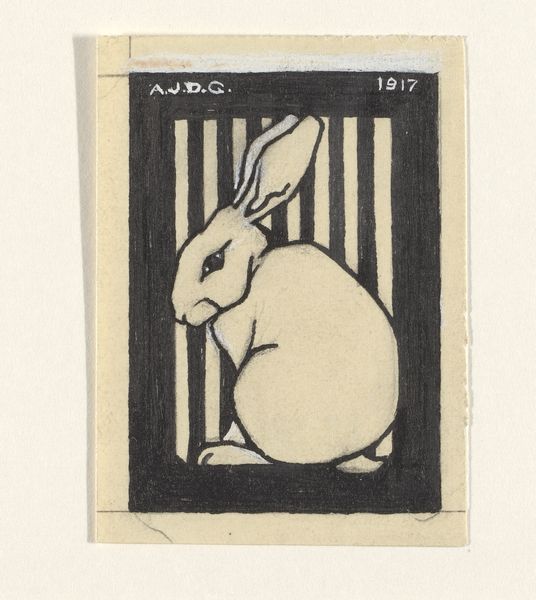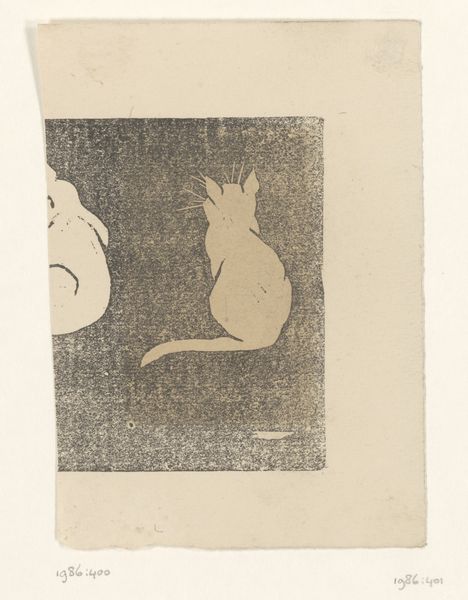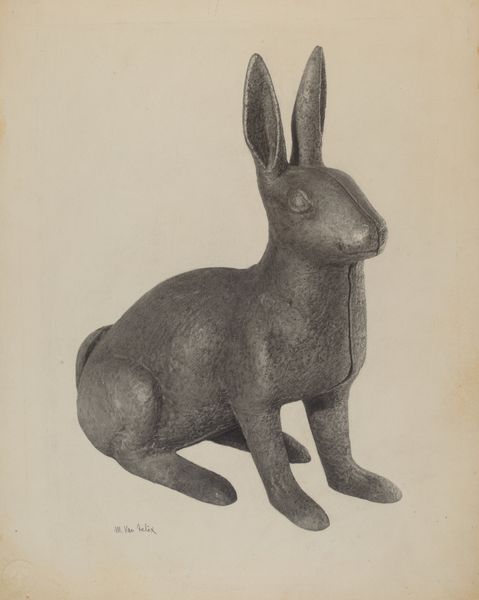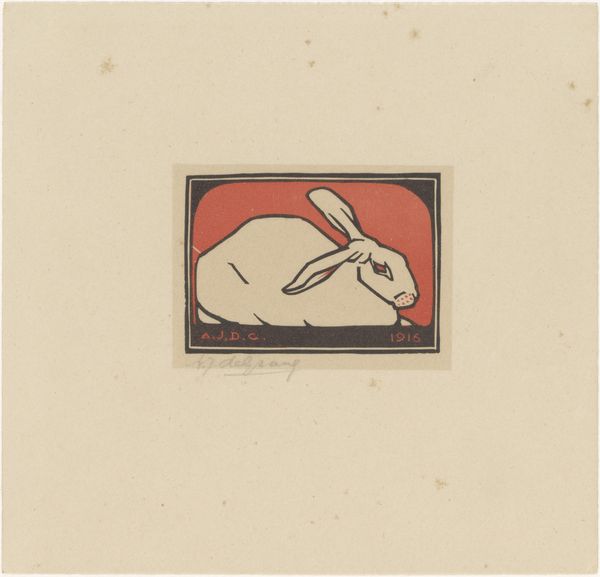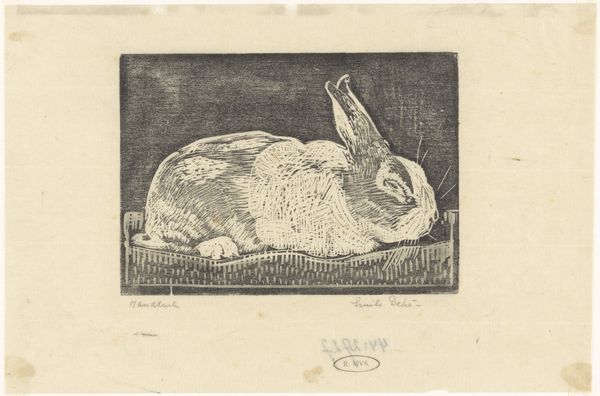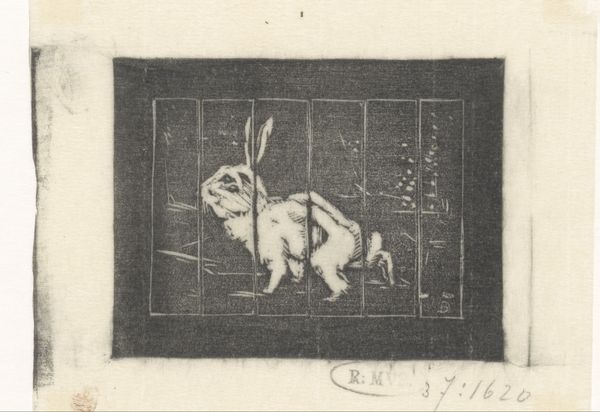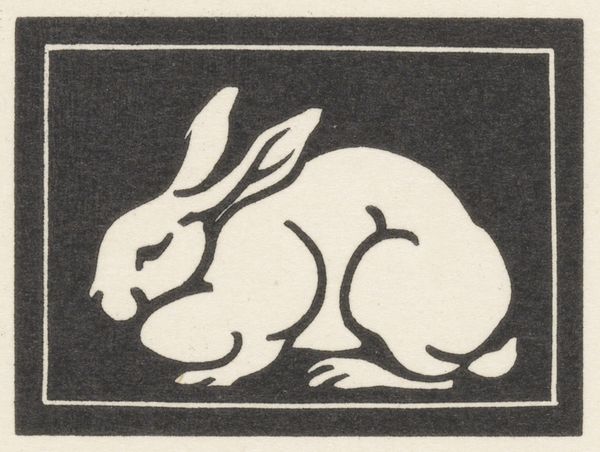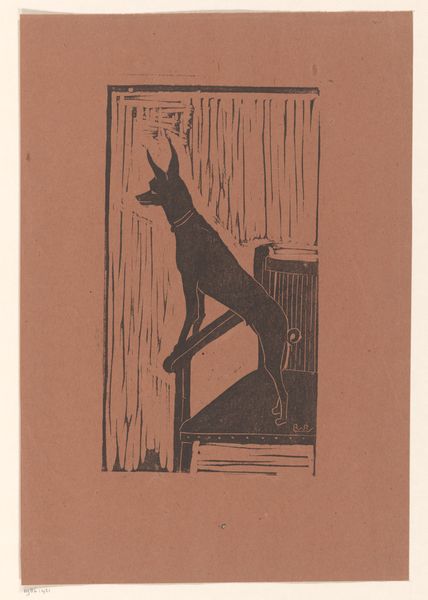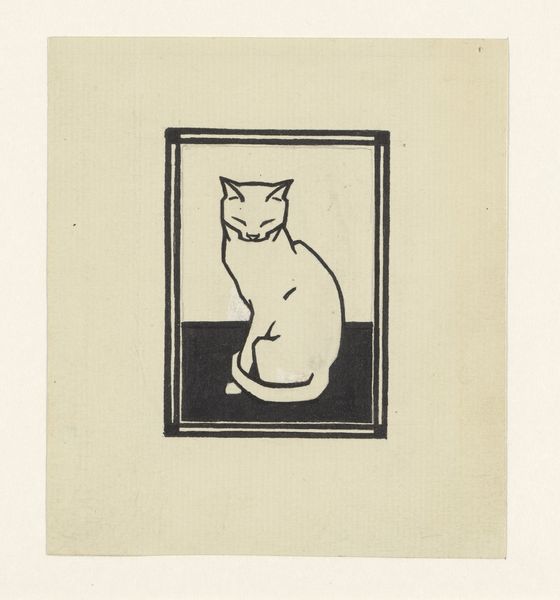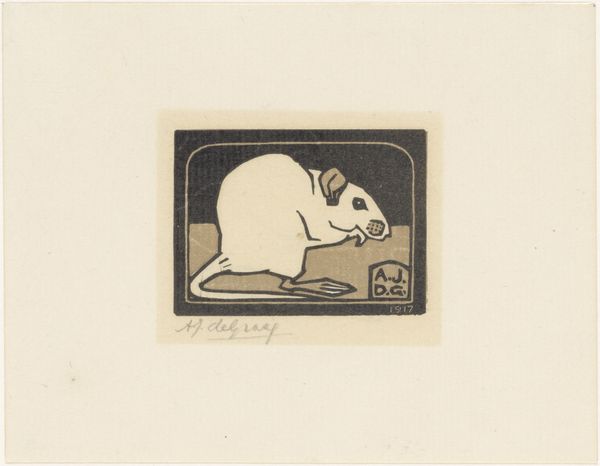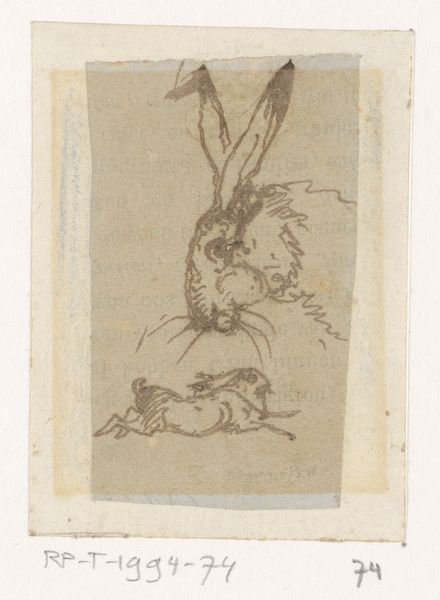
drawing, print, woodcut
#
drawing
#
art-nouveau
#
animal
# print
#
landscape
#
figuration
#
woodcut
#
line
#
symbolism
Dimensions: height 115 mm, width 98 mm
Copyright: Rijks Museum: Open Domain
Editor: This woodcut, "Zittend konijn" or "Seated Rabbit," was created by Julie de Graag in 1917. There's something quite striking about the rabbit's expression and the stark contrast of light and shadow. What are your thoughts? What jumps out at you about this particular print? Curator: What strikes me is the stylized, almost caged, depiction of the rabbit. Given the context of 1917, late in World War One, we might consider this image in light of broader anxieties regarding freedom and confinement. The stark lines of the woodcut, coupled with the symbolism often associated with rabbits—fertility, vulnerability—creates a rather complex visual statement. Do you think De Graag intentionally referenced these anxieties? Editor: That’s an interesting interpretation. I hadn't thought about it in terms of wartime anxieties. I was more focused on the aesthetic - the Art Nouveau influences, perhaps the artist playing with symbolism of purity through color? Curator: Yes, the stylistic choices certainly connect to the Art Nouveau movement, and the purity of form is relevant. But placing it within its historical context opens up another layer of meaning. Consider the broader societal roles assigned to women artists at the time – were they often relegated to more 'domestic' subjects? Was this De Graag's subtle way of critiquing those constraints? Editor: So you're suggesting that even a seemingly simple image of a rabbit could be a commentary on the social and political climate affecting women and the very idea of freedom at that time? That shifts my perspective entirely. Curator: Precisely. And this is why understanding the social and historical currents influencing the artist is crucial to understanding art's multifaceted meaning. Editor: Wow, I’ll definitely keep in mind this connection between socio-political context and imagery, especially as it relates to artists working in times of conflict. Curator: Indeed. It encourages us to consider how personal expression can also be profoundly shaped by collective experiences.
Comments
No comments
Be the first to comment and join the conversation on the ultimate creative platform.
